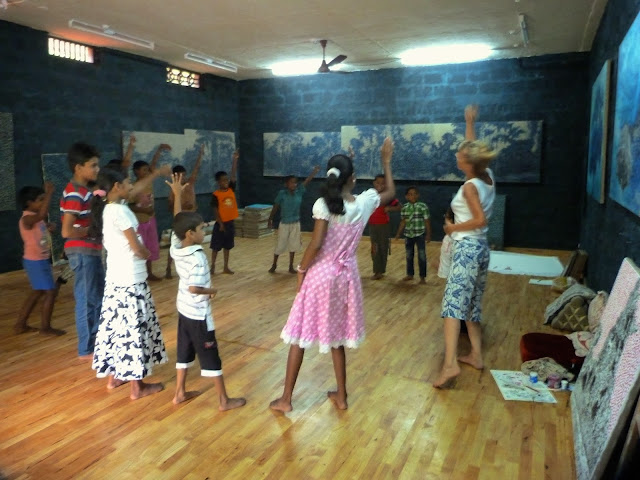It is not easy to find the right date. In March the children class was cancelled – accidentally on that Sunday afternoon the church organised a children prayer. From April to June we have been in Germany. When we came back monsoon was going so strongly that nobody felt to leave the house. Schools were closed because of the floods everywhere.
Kids visited us again and again, asking for the next children class, so finally our 3rd children class took place on Sunday 25 afternoon. Half an hour to early most of the children arrived already exited, more than 20. Luckily there is enough space in the Art Museum.
At first we refreshed the theme water from our first meeting, but since many new kids have come this time and for those who had been here in January this issue is such a novel understanding, that not much was in their memmory. And besides all started so eager to draw, that their concentration was quite poor to listen. We decided to continue talking about that subject on every gathering in future …
Our friend Ajayan, an artist from Alappuzha, had come as last time too, this time accompanied by the poet Philipose Thathampally, who brought some of his publications to show.
Ajayan asked the children: which language is more communicative – malayalam or english? Then he answered: art is the most communicative language! He wrote the malayalam alphabetic character ‘hari‘ on a big piece of paper, which every kid knew, and drew some birds on it. Everybody was amazed and started copying his example …
Later Philipose Thathampally recited some of his poems which was a lot of fun for all, even for me not understanding any word, because he performed one as a sang refrain with clapping 1, 2, 3, 4 fingers on the other hand …
Our grand nephew Joyal-kuttan is the only one saying he is doing everyday drawings. He has done a brillant collection already, one day we will do an exhibiton with his artworks!
At last I made a drawing experiment with the children, which I like very much – it causes always big laughters. 2 people sitting opposite gazing eachother without looking to the paper infront, where they draw just what they see blindly. What comes out makes you laugh, but something true is astonishing visible in this funny drawing.



































